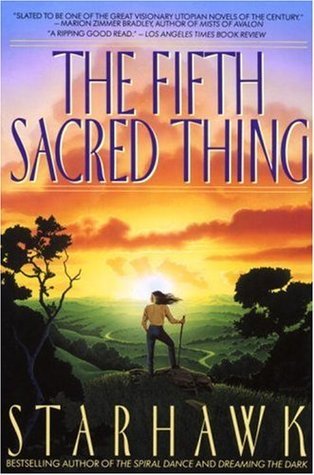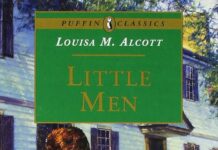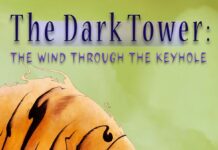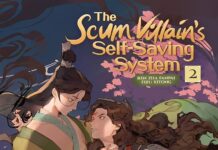In a literary landscape often divided between dystopian despair and utopian idealism, Starhawk’s The fifth Sacred Thing emerges as a compelling synthesis-inviting readers to traverse the delicate terrain where hope and resistance converge. This novel challenges conventional boundaries, weaving a narrative that is at once visionary and grounded, exploring a society striving to balance ecological harmony, spiritual depth, and political activism. in this review, we will delve into how Starhawk constructs her utopia not as a flawless paradise, but as a lived experience marked by struggle, resilience, and the persistent quest for justice.
The Vision of a Sustainable Future in The Fifth Sacred Thing and Its Relevance Today

What makes this vision profoundly relevant today is its emphasis on active stewardship paired with spiritual activism-a dual approach that resonates in global movements addressing climate change, social justice, and indigenous rights. The book’s portrayal of diverse, resilient communities embracing cooperation over domination offers a blueprint that transcends fiction. Key elements contributing to this relevance include:
- Emphasis on renewable energy and permaculture as foundations of daily life
- Integration of indigenous wisdom and local knowledge systems
- Fluid social structures fostering inclusivity and shared responsibility
- Nonviolent resistance as a tool for systemic change
| Aspect | Contemporary Parallel | Impact |
|---|---|---|
| Ecological Harmony | global Reforestation Projects | Carbon Sequestration & Biodiversity |
| Community Empowerment | Grassroots Activism | Policy Influence & Social Change |
| Spiritual Connection | Eco-spiritual Movements | Heightened Environmental Ethics |
How Starhawk Constructs a Multicultural utopia That Challenges Traditional Power structures

Starhawk’s vision dismantles the archetype of a utopia as a homogeneous,authoritarian ideal by weaving together a rich tapestry of cultural voices and radical inclusivity. In her world,communities thrive on collaboration over domination,emphasizing collective decision-making,shared resources,and respect for diverse spiritual and cultural traditions. Eco-centric values are paramount, allowing the city to flourish not through conquest but through interdependence-where humans, nature, and technology coexist in a delicate balance. This challenges the traditional hierarchy of power by decentralizing authority, where leadership is fluid, accountable, and rooted in community consent rather than top-down control.
- Multicultural practices are not just tolerated but celebrated, with festivals, languages, and beliefs coexisting dynamically.
- The city’s defense eschews militarism, favoring nonviolent resistance and strategic alliances that empower marginalized groups.
- Environmental stewardship is a civic duty, integrating permaculture and sacred ecology into urban life.
| Traditional Power Structure | Starhawk’s Utopian Option |
|---|---|
| Centralized State Control | Decentralized Community Governance |
| Monolithic Cultural Identity | Multicultural Celebratory Plurality |
| Hierarchical Leadership | Fluid and Accountable Leadership |
| Militarized Defense | Nonviolent Resistance and Solidarity |
The Role of Spirituality and Nature in Shaping Community Resilience and Resistance

In The Fifth Sacred Thing, spirituality is not merely a personal practise but a collective force that breathes vitality into community resilience. starhawk weaves a tapestry where the sacred and the natural world intertwine, creating a foundation for resistance that is as much about healing as it is about defiance. The community’s reverence for the earth-and a shared spiritual ethos-nurtures bonds that transcend conventional political activism,fostering a network of mutual care and empowerment.This spiritual ecology acts as an anchor, enabling the inhabitants to withstand external threats while maintaining an ethos of peace and inclusivity.
Nature itself is portrayed as both a sanctuary and a symbol of sustained resistance. Through intimate connection with land, water, and flora, the community cultivates not only physical sustenance but also a profound sense of belonging and purpose. The integration of spiritual rituals and ecological awareness creates a dynamic synergy that is reflected in daily life and collective governance. Consider the following principles that illustrate this harmony:
- Reciprocity: Honoring the give-and-take relationship with the habitat.
- Embodiment: Recognizing the body as sacred and interconnected with earth.
- Ritual Practice: Using ceremonies to renew community commitments and heal trauma.
- Nonviolence: resistance rooted in compassion and restoration rather than destruction.
| element | Role in Community | Impact on Resistance |
|---|---|---|
| Sacred Trees | Gathering places for rituals and decision-making | Strengthen unity and focus collective will |
| Waterways | Sources of life and spiritual cleansing | Symbolize renewal amid struggle |
| Songs & Chants | Preserve history and convey shared values | Maintain morale and inspire hope |
Analyzing the Balance Between Hope and Realism in the portrayal of Post-Apocalyptic Society

Starhawk’s narrative deftly treads the tightrope between hopeful idealism and sober realism,constructing a post-apocalyptic world that feels both aspirational and grounded. The society depicted is not a flawless utopia but a dynamic, living experiment where sustainable living, spirituality, and inclusivity are pillars amidst the shadow of conflict and scarcity. Through vivid character arcs and communal interactions, the novel reveals how resilience arises from imperfections-how hope thrives alongside hardship rather than in opposition to it.
This delicate balance is reflected in the complexities of the society’s structure and individual choices, emphasizing that change requires both vision and pragmatism. Consider the following dynamics present in the world Starhawk builds:
- Interdependence: The community relies on cooperation and mutual aid, highlighting that survival is collective.
- Conflict: Threats from external forces challenge the community’s core values, preventing complacency.
- Cultural Reverence: spiritual and ecological respect foster identity and purpose, anchoring hope.
| Aspect | Hopeful Elements | Realistic Challenges |
|---|---|---|
| Governance | Participatory councils | Power struggles & compromise |
| Resource Management | Regeneration & recycling | Scarcity & uneven access |
| Security | Community defense | External threats |
Character Arcs That Illuminate the Complexities of Resistance and Transformation
Starhawk crafts characters whose journeys unfold as vivid explorations of personal and societal upheaval. each figure embodies a unique tension between holding onto the past and embracing the uncertain pulse of change, making their transformation a mosaic of resistance that feels deeply human. Whether defying violent oppressors or wrestling with internal doubts, these characters reveal that resistance is not merely an external act but an intimate process of self-reclamation. Their stories highlight how survival in a fractured world requires more than defiance-it demands empathy, adaptability, and a profound reimagining of what community and power can mean.
To understand these multifaceted arcs, consider the table below, which slices through key character attributes and turning points, emphasizing how their struggles are woven with choices that challenge both ideology and identity:
| Character | Core Resistance | Transformational Catalyst | outcome |
|---|---|---|---|
| Maya | Environmental guardianship | Encounter with corporate oppression | Leader reshaping community bonds |
| Bird | Spiritual connection | Loss and reconciliation | bridge between worlds |
| Whisper | Nonviolent defiance | Formation of alliances | Symbol of peaceful revolution |
- Resistance is portrayed not as a singular act but as a continuum of choices.
- Transformation emerges through confrontation, sacrifice, and unexpected solidarity.
- Identity remains fluid, demonstrating the interplay between personal conviction and collective evolution.
The Symbolism of The Fifth Sacred Thing and Its connection to Indigenous Wisdom
The Fifth Sacred Thing in Starhawk’s visionary novel transcends mere narrative to become a profound emblem of interconnectedness and harmony with nature, deeply rooted in Indigenous cosmologies. rather than a literal element, the “fifth” represents the sacred spirit that animates the physical world-air, water, earth, and fire-binding them together in a symbiotic relationship.This spiritual quintessence echoes Indigenous beliefs that emphasize balance, respect, and reciprocity with all living beings. By weaving this symbolism into her story,Starhawk invites readers to reflect on the essential principle that true sustainability emerges not from domination but from coexistence and reverence.
Throughout the narrative, the sacred fifth guides the community’s efforts to resist oppression, articulating a form of activism enriched by ancient wisdom and ritual practice. The novel’s depiction aligns closely with Indigenous traditions where elements are not isolated but seen as part of a living, breathing whole. This connection reinforces a philosophy that activism must be holistic, honoring the earth and its cycles as much as social justice. Below is a simple comparison table illustrating how the novel’s five elements resonate with Indigenous interpretations:
| Element | Starhawk’s Symbolism | Indigenous Wisdom |
|---|---|---|
| Earth | Source of abundance and healing | Mother and provider of life |
| water | Flowing connection and purification | Spirit and cleansing force |
| Fire | Transformation and protection | Energy of renewal and change |
| Air | Freedom and dialog | Breath of life and wisdom |
| The Fifth | Spirit uniting all elements | Sacred life force or spirit |
- Interconnectedness: A core Indigenous principle reflected in the novel’s narrative structure and community ethos.
- Resistance as Healing: Emphasizes that social movements are deeply tied to spiritual renewal.
- Ritual and Activism: Combines ceremony with political action, honoring tradition while challenging modern injustices.
Narrative Techniques That Engage Readers in Ethical and Environmental Questions
Starhawk masterfully intertwines personal narratives with broader societal issues, inviting readers to engage deeply with ethical and environmental dilemmas. By employing a rich tapestry of multiple perspectives, the novel crafts a living mosaic of voices that challenge traditional binaries of good and evil. This technique not only humanizes complex conflicts but also encourages readers to reflect on the interconnectedness of individual choices and collective consequences. symbolism, such as the sacred trees and the transformative power of ritual, is woven seamlessly into the narrative, anchoring abstract ethical questions in tangible, resonant imagery.
Another compelling technique is the novel’s use of speculative world-building, which constructs a future that feels both possible and urgent. Through the juxtaposition of the utopian San Francisco and the militarized Southlands,readers are confronted with contrasting visions of resistance,sustainability,and control. this duality is elucidated in the table below, highlighting the core elements that shape each society:
| Aspect | San francisco (Utopia) | Southlands (Resistance) |
|---|---|---|
| Governance | Participatory councils | Authoritarian military rule |
| Relationship to Nature | Harmony and reverence | Exploitation and domination |
| Community Practices | Collaborative rituals and healing | fear and control tactics |
| Conflict Resolution | Dialogue and empathy | Violence and suppression |
This structured contrast allows readers to grapple with ethical choices embedded in environmental stewardship and social justice, engaging creativity alongside critical reflection. In doing so, Starhawk’s narrative becomes a powerful catalyst for envisioning alternatives and questioning the status quo.
Exploring Gender Fluidity and inclusivity as Cornerstones of Starhawk’s Utopian World
The community’s radical embrace of gender multiplicity is mirrored in its social structures and rituals, where collaboration and mutual respect replace hierarchy and exclusion. Here, leadership roles are not predicated on assigned gender but on wisdom, compassion, and commitment to collective well-being. Below is an overview of how gender and inclusivity interplay within this utopian framework:
| Aspect | Manifestation in Society |
|---|---|
| Gender Identity | Dynamic and self-determined, celebrated in cultural ceremonies |
| Social Roles | Assigned by ability and desire, unlinked to gender norms |
| Community Language | Inclusive pronouns and terms that evolve with individual preferences |
| Conflict Resolution | Focused on empathy and collective harmony, rejecting aggression |
- Fluid identities become a source of strength, enabling creative problem-solving and deeper empathy.
- Inclusivity extends beyond gender to embrace racial, cultural, and spiritual diversity, forming a holistic embrace of difference.
- Utopian harmony is maintained through ongoing dialogue, where every voice and gender expression is valued as integral.
The Impact of Nonviolent Resistance and Collective Action in the Story’s Conflicts
In The Fifth Sacred Thing, starhawk intricately weaves the power of nonviolent resistance into the fabric of the story’s central conflicts, presenting it as a vital force that challenges oppression without perpetuating cycles of violence. The characters’ collective commitment to peaceful defiance becomes a beacon of hope amid chaos, illuminating how steadfast unity in purpose can dismantle even the most entrenched systems of control. Through acts like civil disobedience, communal support, and strategic disruption, the narrative showcases that lasting change emerges not from brute force but from the deliberate, compassionate assertion of shared values.
Key elements of this resistance are highlighted through dynamic group efforts that rely on empathy and inclusivity, underscoring the strength found in grassroots activism.The community’s diversity-spanning various ages, backgrounds, and abilities-embodies a tapestry of resilience and innovation that fuels their struggle. Consider the following aspects that propel their movement:
- Collective Decision-Making: Everyone has a voice,reinforcing democratic ideals.
- Healing Practices: emotional and spiritual care sustain morale and unity.
- Symbolic Acts: Art and ritual preserve identity and inspire resistance.
- Creative Disruption: Nonviolent tactics destabilize oppressive authority structures.
| Method | Purpose | Impact |
|---|---|---|
| Peaceful Blockades | Prevent military advance | Delays enemy, builds visibility |
| Community Gardens | Promote self-sufficiency | Strengthen cohesion, reduce dependence |
| Storytelling Circles | Preserve cultural memory | foster shared identity |
| Mass sit-Ins | Demand reform | Highlight injustice to broader society |
Recommendations for Readers Interested in Ecofeminism, Social Justice, and Speculative Fiction
Readers who find themselves captivated by the intricate weaving of ecological wisdom and feminist thought in The Fifth Sacred Thing will also appreciate exploring works that challenge dominant paradigms while envisioning transformative futures. Engage with authors who blend environmental activism with social critique to expand your understanding of interconnected justice. Titles such as Octavia Butler’s Parable of the Sower or Ursula K. Le Guin’s The Dispossessed resonate through their delicate balance of speculative foresight and unflinching social examination, inviting contemplation on resistance and harmony. These narratives push boundaries and question structures, making them essential reads for those invested in ecofeminist ideals and systemic change.
To deepen your engagement, explore a curated selection of essential nonfiction and fiction crafted to illuminate complementary themes:
- Ecofeminism by Maria mies and Vandana Shiva – a foundational text linking environmental exploitation with gender and economic oppression.
- braiding Sweetgrass by Robin Wall Kimmerer – essays that merge indigenous knowledge with ecological science in a hopeful narrative.
- Woman on the Edge of Time by Marge Piercy - a provocative speculative novel investigating gender, environmentalism, and utopian possibilities.
| Theme | Recommended Work | Why It matters |
|---|---|---|
| Ecofeminist Theory | Ecofeminism | Foundational link between nature and gender justice |
| Speculative Futures | Parable of the Sower | Survival and hope amid ecological collapse |
| Indigenous Wisdom | Braiding Sweetgrass | Harmony between humanity and earth |
| Social Resistance | Woman on the Edge of Time | Intersection of feminism and utopia/dystopia |
Comparing The Fifth Sacred Thing to Other Dystopian and Utopian Literary Works
The Fifth Sacred thing challenges traditional dystopian and utopian tropes by blending a visionary ecology with spiritual activism, distinguishing itself from classics like 1984 or Brave New World. While many dystopias depict oppressive regimes that crush individuality,Starhawk offers a nuanced resistance through community-building and interconnectedness with nature. Unlike the technological control found in neuromancer or Snow Crash, her vision embraces a harmonious relationship between humans and the earth, where magic and ritual serve as catalysts for social change. This creates a layered narrative that pushes beyond fear-driven dystopias into a space of healing and hope, redefining what resistance can look like in post-apocalyptic settings.
Comparing The Fifth Sacred Thing to utopian works such as Walden Two or Island reveals intriguing contrasts in social organization and ethics. Starhawk’s city isn’t a perfect, sanitized experiment but a living, breathing ecosystem where conflict and diversity are acknowledged, not erased. The emphasis on environmental stewardship, gender fluidity, and spiritual empowerment situates the novel alongside progressive visions while retaining a grounded tension between idealism and realism.Below is a brief comparison table highlighting key elements:
| Aspect | The Fifth Sacred Thing | Typical Utopias |
|---|---|---|
| Governance | Consensus-based, inclusive, spiritual | Structured, frequently enough authoritarian or technocratic |
| Relationship to Nature | Integral, sacred, restorative | Varies; often utilitarian or idealized |
| conflict | Persistent but transformational | Minimal or suppressed |
| Role of spirituality | Central and empowering | often secular or symbolic |
The Legacy of Starhawk as a Visionary Writer and Activist Shaping Contemporary Ecofiction
Starhawk’s work transcends traditional storytelling, weaving a tapestry of ecological consciousness, spiritual depth, and radical activism. Her visionary approach situates the Fifth Sacred Thing not only as a novel but as a beacon for ecofiction’s potential to inspire real-world change. By crafting a society where harmony with nature and communal resilience prevail, she illuminates the pathways of resistance against oppressive, extractive systems. Readers are invited to imagine and participate in futures where sustainability is not simply an ideal but a lived reality. This intricate blend of narrative and activism challenges the binary of utopia and dystopia, proposing a nuanced middle ground where recovery, hope, and struggle coexist.
Central to her legacy is the emphasis on interconnectedness-between humans, the earth, and the spiritual realms-underscored throughout the novel’s dynamic characters and settings. Starhawk’s influence can be distilled into key themes that resonate across contemporary ecofiction:
- Earth-centered spirituality: Reclaiming ancient wisdom and ritual to restore balance.
- Collective resilience: Highlighting community as a force of resistance and regeneration.
- Intersectional activism: Addressing social justice alongside ecological concerns.
- Creative resistance: utilizing nonviolent methods and storytelling as tools for change.
| Aspect | Impact on Ecofiction |
|---|---|
| Visionary worldbuilding | Inspired immersive, hopeful futures |
| Activist Roots | Bridged literature with real-world movements |
| Spiritual Ecology | Expanded narrative diversity and depth |
| Gender & Social Justice | Enriched depiction and themes of inclusion |
The Fifth Sacred Thing invites readers on a journey where utopia is not a distant dream but a fragile, living possibility-constantly threatened yet fiercely defended. starhawk’s weaving of resistance and hope challenges us to rethink the boundaries of community, power, and spirituality. Whether embraced as a visionary blueprint or critiqued for its complexities, the novel lingers in the mind as an invitation to imagine worlds worth fighting for.As we close the final page, we are left not with answers set in stone, but with questions that pulse like a heartbeat, urging us to explore our own paths toward healing and change.












